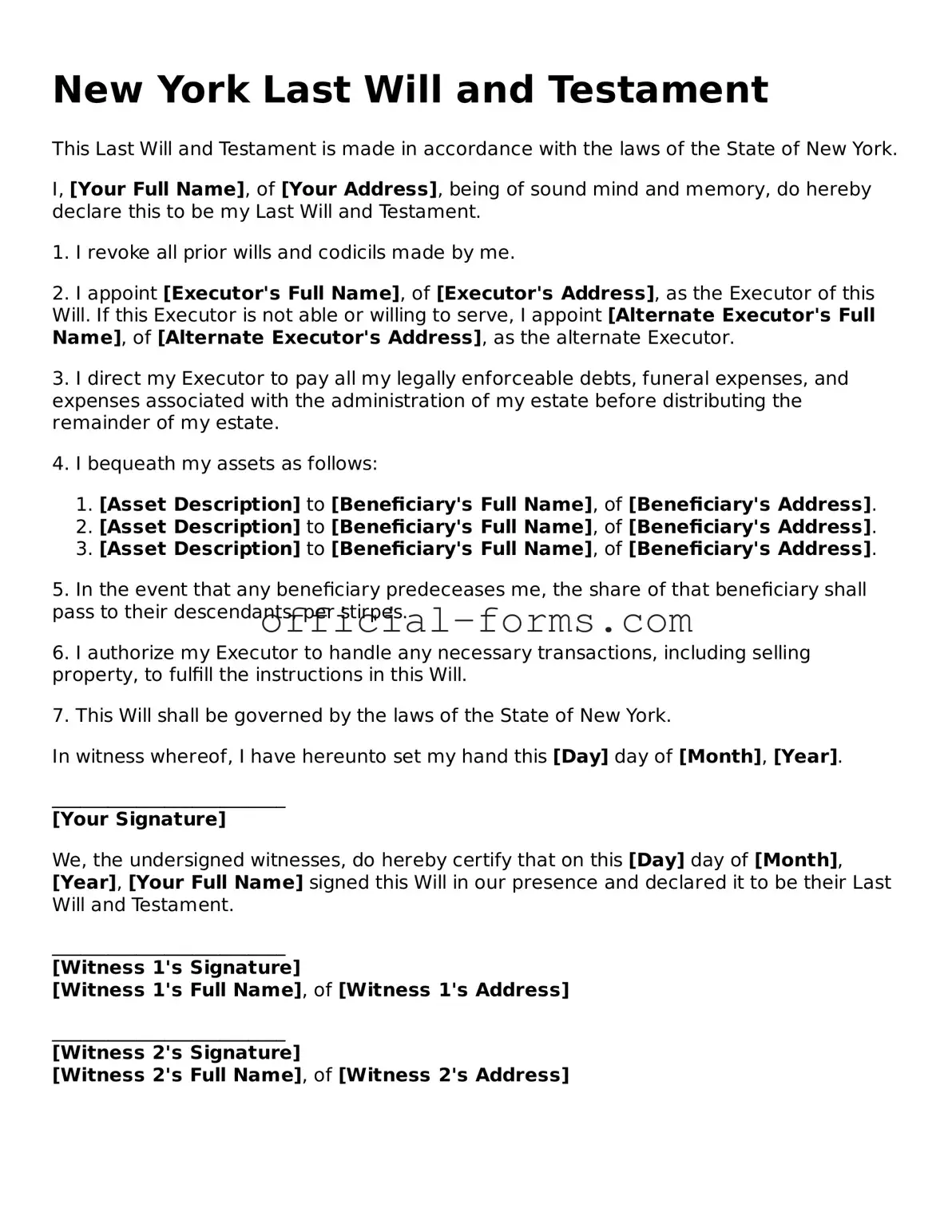Filling out a New York Last Will and Testament form can be a straightforward process, but many people make common mistakes that can lead to complications. One frequent error is not clearly identifying the testator. The form should include the full legal name of the person creating the will. Omitting or misspelling the name can create confusion later.
Another common mistake is failing to date the will. A will should always be dated to establish when it was created. Without a date, it can be difficult to determine which will is the most current, especially if multiple versions exist.
Many individuals also overlook the importance of witnesses. In New York, a will must be signed in the presence of at least two witnesses. If this step is skipped, the will may not be considered valid. Witnesses should also be disinterested parties, meaning they should not stand to gain anything from the will.
Some people forget to sign the will at the end. The testator's signature is crucial. If the will is not signed, it cannot be executed. It's important to ensure that the signature is placed at the end of the document, as this indicates the conclusion of the will's terms.
Another mistake involves not being specific about the distribution of assets. Vague language can lead to disputes among beneficiaries. Clearly stating what each beneficiary will receive helps avoid misunderstandings and potential conflicts.
Additionally, people sometimes neglect to update their will after significant life events, such as marriage, divorce, or the birth of a child. Failing to revise the will can result in unintended beneficiaries or outdated provisions.
Some individuals do not consider the implications of appointing an executor. Choosing someone who is not trustworthy or capable can lead to mismanagement of the estate. It’s essential to select an executor who is responsible and understands the duties involved.
Another frequent oversight is failing to provide for alternate beneficiaries. In the event that a primary beneficiary predeceases the testator, having alternate beneficiaries ensures that assets are still distributed according to the testator's wishes.
Finally, people often do not keep their will in a safe place. It is important to store the will in a secure location and inform trusted individuals of its whereabouts. If the will cannot be found after the testator's death, the estate may be settled according to state laws rather than the testator's wishes.
